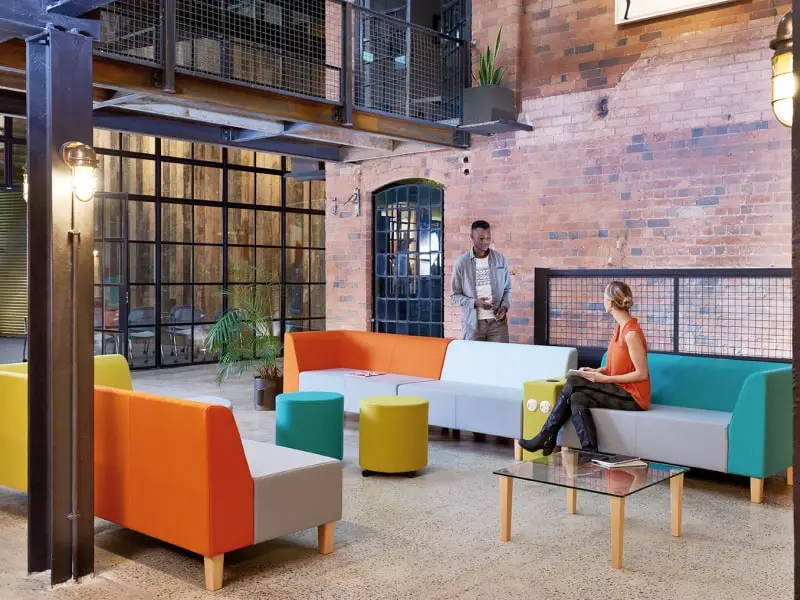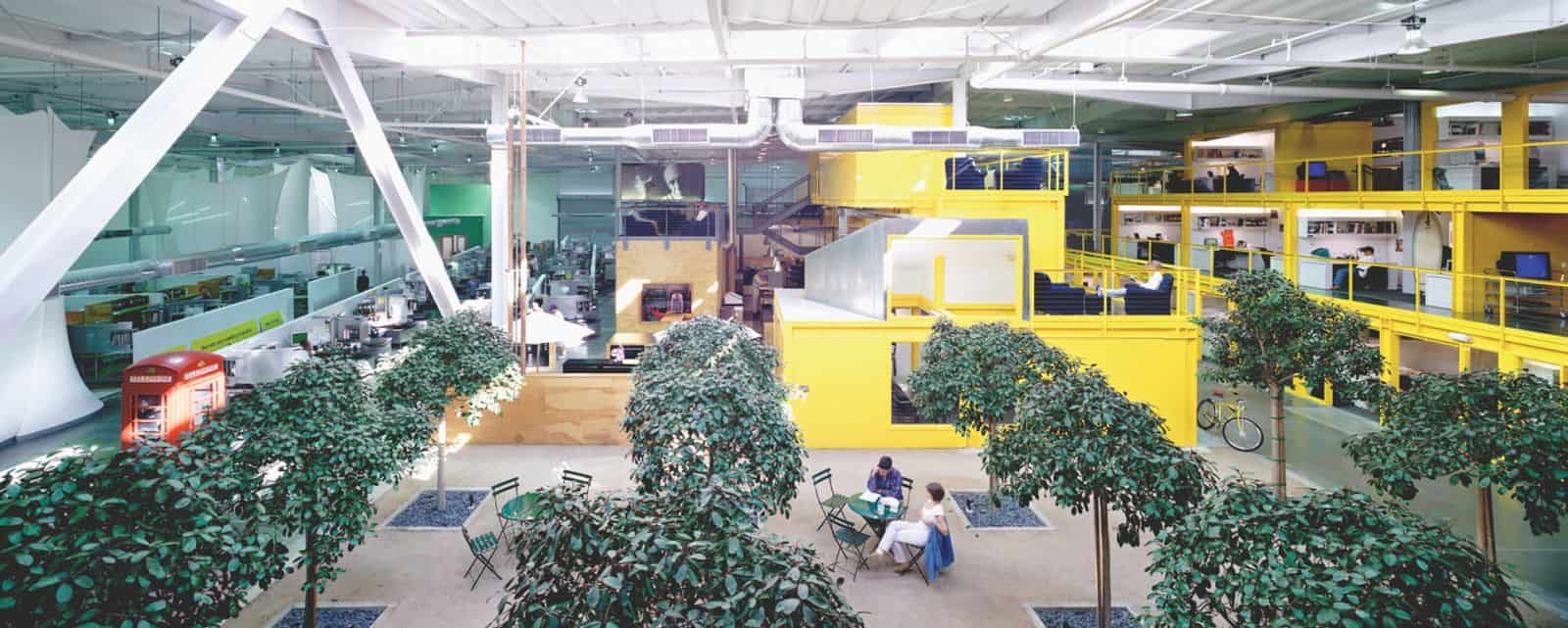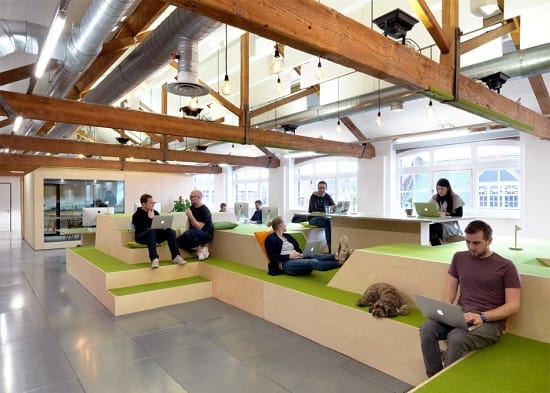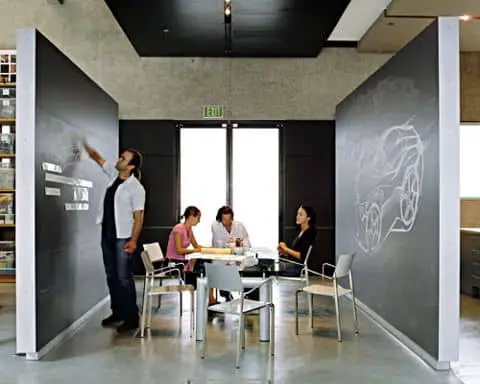In any organization, employees are productive if they enjoy doing what they do, enjoy working at the company and enjoy delivering results that the employer wants. There are so many factors at work that may affect the morale and productivity of employees, but one way that employers can boost productivity is by creating an agile working environment.
So, what is an agile workplace? An agile work environment involves creating a flexible as well as a productive environment where employees can thrive to achieve the corporate strategy. It involves creating working areas within the office such that employees have freedom as well as the flexibility to work where they want and when they want to. An agile workplace makes it possible to increase profitability by focusing on what the employee do and providing office space that meets their needs.
An agile working environment is based on several factors, spaces, environments and different individuals who may either work individually or collaborate as a group. Agile space in its own sense involves such things as collaboration space, focus space, relaxation space, team meeting space, concentration space, inspirational space, and phone conversation space. An agile workplace provides flexible working spaces for different activities in the workplace ensuring that employees are engaged and productive. (We have provided additional definitions in our Glossary – what is an agile workplace )
)

Importance of An Agile Workplace
Any office space or workplace can become effective, efficient and more flexible if it supports a dynamic workforce rather than a static one. By getting rid of desk ownership, an employer can increase population that is associated with office spaces. With that in mind, there are so many factors that tend to affect the morale and dynamism at work from a dark office, an unsafe environment to computers not being placed in the right angle.
All these factors combined contribute to an unhappy disengaged workforce who affect the profitability of any company. As an employer, it is up to you to find ways of dealing with such issues and making the environment as conducive as possible such that employees enjoy working there and doing their jobs.
One of the best ways and what most employers are adapting is creating an agile working environment. Agile working is revolutionizing offices all over the globe and bringing a sense of individualism as well as collaboration in different industries. The whole point of creating an agile working environment is to ensure that employees are given the freedom as well as space to work where they feel comfortable. This could be a collaborative bench space or a quite pod or even just the traditional desk as long as the employee feels comfortable and can deliver. (Learn more on what is space management in our previous article)
in our previous article)
One of the mistakes that most employers make is try and squeeze as many people as they can into one space since they assume that in doing so they will be cutting on costs and boosting collaboration. In reality, however, this only leads to employees feeling uncomfortable and is a major cause of demotivation and such workspaces may be the main reason why your employees are not as productive as they are expected to. It may also be the reason why you have high turnover and can’t seem to retain star employees because they feel choked up by the environment such that they can’t be the best they can be at what they do.
Reinstating personal space as well as boundaries is one of the things that you should be striving to achieve as an employer. Not only is an agile work environment beneficial to employees, but employers can also reap the greatest benefits from such an arrangement. In creating an agile working culture, absenteeism will reduce, there will be increased productivity and you will be reducing both operational and real estate costs.
Introducing an Agile Work Environment
For any employer, creating an agile workplace should be a slow and a well thought out process and in line with corporate strategy. Sometimes changes that are introduced at work without the employees being aware end up not working. When you are integrating agile working, the zones that you should concentrate on are focus, meeting, collaboration and social.
Focus zones involve having open plan areas, with quiet and small pods down the corridors making up about 50 percent of the office space. Collaboration spaces, on the other hand, are for when workers need to come together either for quick chats or to boost creativity. While collaboration space should not necessarily be a meeting room, it should be accessible to everyone but a bit shielded and should make up about 30 percent of the total office space.
After you have created these spaces, the rest of the space can serve as social and meeting areas where employees or teams can meet for confidential matters or have lunch. When you are introducing an agile working environment, one thing you should discourage is employees eating at their desks because they need to take breaks and step away from their desks if they are to be productive.

How to Create an Agile Workplace
In the past years, the workplace has undergone immense changes and companies have no choice but to adapt so as to respond in a quick and efficient manner. Despite technology being able to boost efficiency and productivity, very little can be achieved if employees are not engaged to boost creativity and innovation.
One of the ways companies are using to boost creativity and productivity is by introducing agile working which involves moving away from the highly structured traditional work environments by breaking barriers and giving employees independence as well as autonomy to not only enjoy what they do but where they work. If you are thinking about creating an agile workplace, here are a few things that you should take into consideration.
Encourage Flexibility
Flexibility is the whole point of creating an agile work environment. Flexibility involves more than just how employees do their work but where they do it. Rather than tethering your employees to the traditional office desks with wired phones and bulky computers, encourage flexibility such that an employee doesn’t have to come to work five days a week from 9 to 5. (We have written a related article – what is workplace flexibility )
)
Give Employees the Skills Needed to Succeed
While an agile work environment can offer flexibility, sometimes you may find that the company is demanding too much than what employees can handle. Rather than your employees coming to work to handle the same repetitive tasks, encourage innovative solutions to problems and working in teams to accomplish different goals.
More Leadership than Management
While leadership and management go hand in hand in the smooth running of a company, they are not entirely the same. Managers are responsible for enforcing accountability and directing tasks, while leaders are focused more on empowering and inspiring others to accomplish the objectives set out which is what you should encourage if agile working is to succeed.
Providing Identity and Purpose
While your employees will certainly enjoy the autonomy that results from an agile workplace, giving them total control over their work doesn’t always guarantee productivity or engagement. As such, you need to find ways of giving their jobs a sense of identity that aligns with their ideals and values. Employees who find meaning in what they do are likely to be more committed to meeting targets than those who don’t.

The Changing Demographics at Work
One of the things that employers should pay close attention to when it comes to creating an agile work environment is the changing demographics in today’s working environment. How do you make the work environment work for both millennials and baby boomers? Different demographics have different requirements, needs as well as preferences. To accommodate everyone, there is a need to put into consideration all these characteristics.
The best way you can address each and everyone’s needs is to use firms that offer workplace consultancy. By analyzing the preferences of different groups of people through either workplace monitoring or personalized interviews, such a firm can advise on the best way to organize the office.
Baby boomers are usually the older generation who are used to change since they have been there through it all from the advent of smartphones and laptops to flexible-working and due to that, they are adaptable. Studies have it that this older generation is more comfortable with a formal and structural office. They also prefer face to face conversations rather than sending a text or an email and as such a collaborative working space will work best for them.
Millennials, on the other hand, are already agile in that they are already working on laptops at home or in cafes or libraries. As an employer, you shouldn’t change this but highly encourage it. Millennials are always looking to change jobs and will look for a company whose work environment suits them and allows them to have a better work-life balance.
Generation X, make up the smaller group and what this group values most is work-life balance. They are at that point where they have their own office and as such, you need to be very careful about any change you want to introduce. With such a demographic, outsourcing a firm or workplace consultancy may be the best way of managing communication.
The final group is the generation Z. Like millennials, they are always on the move and are just about to join the workforce. They are agile and self-motivated and they value personal development and as such need the space to make that possible.
Different demographics continue to force change in the environment, and employers can accept this and create an agile working environment that suits each and every one.
Related Questions
Why care about implementing agile working? An agile working environment can help deal with changing business demands and priorities. Agile working has been shown to boost productivity, improve innovation, creativity, flexibility, and hiring and retaining of talent.
Is agile working right for every business? When it comes to agile working, whether it will work for your business or not depends on the nature of the business and day to day tasks that are handled by employees. When implemented well, agile working can help boost employee engagement, perception, talent acquisition, and retention through a more innovative agenda.

